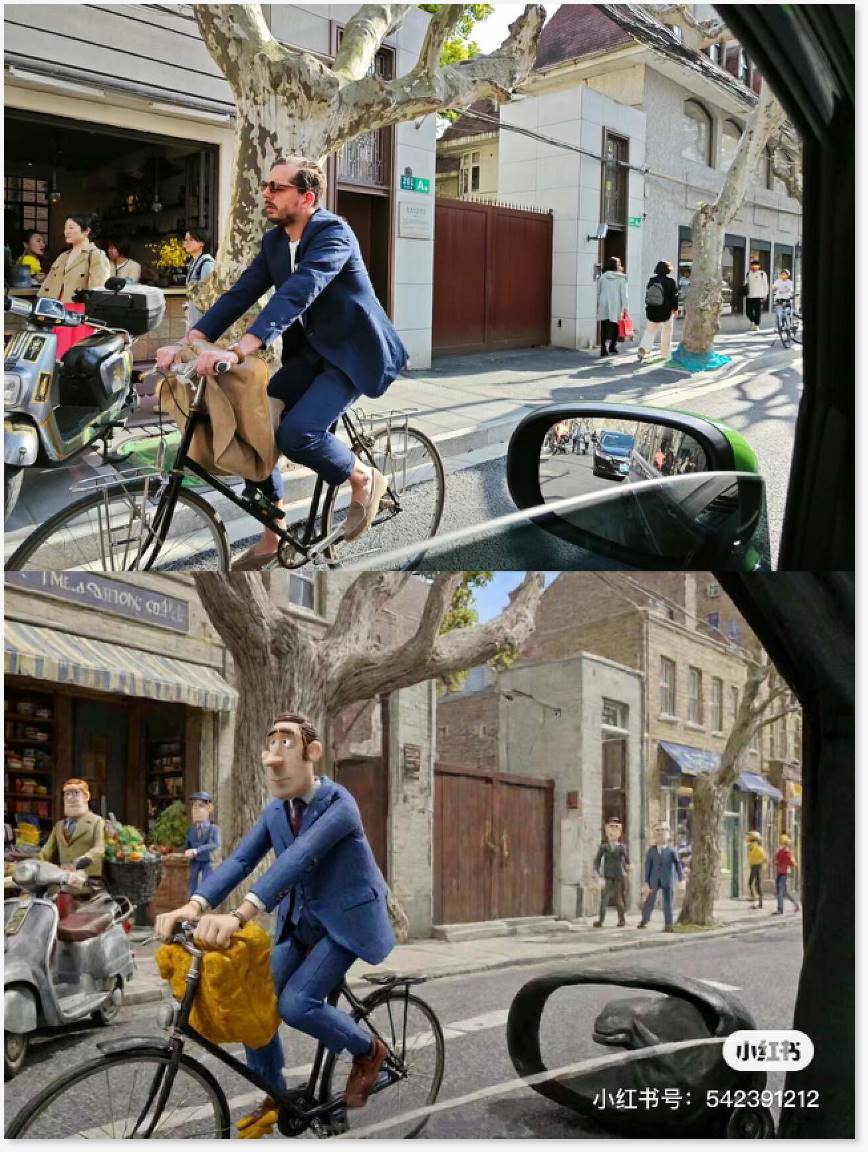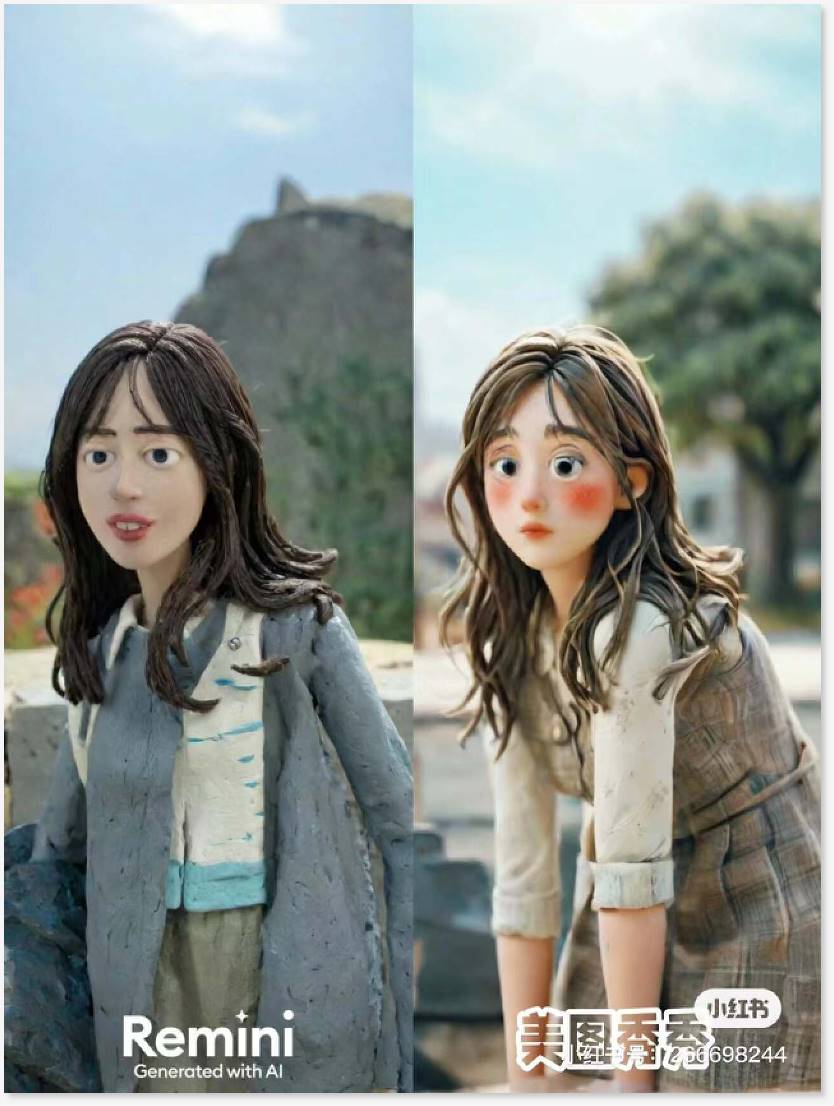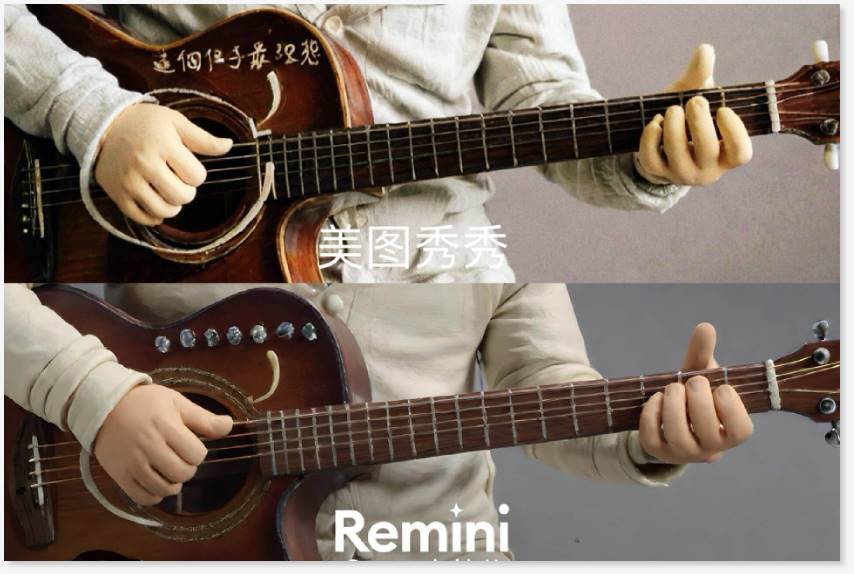Why does the big model always draw bad hands?
Author: Mu Mu
Upload a picture, click on the clay effect, and you will get a brand new cartoon photo in the style of "Shaun the Sheep", where every detail in the picture, whether it's a person, object, or scene, looks as three-dimensional as if it were made of clay.
The clay effect has become popular on social platforms, and AI photo editing application Remini, which has this feature, has also gained a large number of downloads. After various clay photos were produced, some people complained that they were ugly and didn't understand why they were popular, while others embraced this "ugly cute" style. Some people even provided strategies for creating "clay photos that are both clay-like and good-looking", and there were even people charging for generating them on Xiaohongshu and Xianyu.
With the popularity of clay effects, Remini, a new software, has gained traction, and the old photo editing app Meitu has also added a clay effect feature, addressing the pain point of being able to generate "beautiful clay photos" for users for free and quickly.
The underlying technology of AI photo editing software still tests the technical capabilities of the original image's big model. How does the clay effect's ability to transform 2D images into 3D effects challenge the "hand" shaping ability of the big model? Judging from the results, Meitu and Remini are really lacking in "hand" shaping ability.
Clay effect turns Remini into a hit for "export to domestic"
Who doesn't have a photo in the style of "Shaun the Sheep" these days? Recently, on social platforms such as Weibo and Xiaohongshu, the clay effect has captured a new wave of traffic. The three-dimensional cartoon images with a clay-like feel have been well received by young people. The AI photo editing software Remini, which creates the "clay effect", has also become popular.
The "clay effect" can transform 2D images into 3D cartoon images as if they were made of clay, and the effect can be likened to the animated series "Shaun the Sheep". Under posts sharing clay effect images on social networking sites, many people are asking "what software was used", and Remini and Meitu are among the answers, but Remini receives higher praise from users.
After using it, it was found that when facing complex visual elements, Remini is more effective in handling details, whether it's outdoor sports or natural scenery, Remini can transform all visual elements into a clay-like texture.

The effect of Remini's clay effect on complex images
The "ugly cute" feeling of the clay effect photos is also a sought-after effect for many users. Some netizens commented, "It's ugly but joyful." Letting Remini generate clay photos is like opening a blind box, the same photo can produce different "surprises". There are even netizens on Xiaohongshu who have spontaneously organized a bizarre and ugly photo competition.
Since various effect templates within the app are mostly named in English, many users mistakenly believe that Remini is a purely overseas-developed AI photo editing app. In fact, the app's founding team comes from Beijing Guang Technology Co., Ltd., which previously launched a photo editing filter app called "You and I in the Past" in 2019, focusing on restoration functions. The photo editing app targeting overseas markets is Remini.
Later, Remini was acquired by the Italian company Bending Spoons and quickly caught up with the trend of AI photo editing.
The clay effect is just one of the AI filter functions in Remini. The app also has a "photo enhancement" function with beauty effects, an "AI photo" function for generating styled photos, and the ability to generate videos. The iOS and Android versions are currently available.
Remini is not completely free. Currently, unlocking functions requires a weekly or annual subscription. The Lite version, which provides access to the main functions, costs 38 yuan per week and 228 yuan per year, while the Pro version, which unlocks all functions, costs 68 yuan per week and 548 yuan per year. Remini also offers a free trial for a week or the option to use certain functions for free by watching ads, attracting potential paying users.
However, the payment does not seem to hinder Remini's popularity, and of course, the "clay effect" is the tipping point. According to the official website, Remini currently has 40 million monthly active users, 15 million monthly downloads, and has enhanced 5 billion photos/videos.
Since the Android version of Remini is currently only available on the Google Play Store, many people are unable to download it. Therefore, under posts sharing Remini's clay effect, many Android users have posted images, asking others to help them generate "clay-style" photos. On Xiaohongshu and Xianyu, there are even paid services for generating them.
AI drawing "hands" reveals bugs in the big model of original image
After the popularity of the "clay effect", many image editing software have added this feature. The domestic popular photo editing software Meitu, of course, has opened the clay effect in the Meitu formula function, and many formulas can be tried for free.
Unlike Remini, Meitu has added a bit of "beauty filter" while retaining the clay-like qualities, softening the "ugly" effect. Some netizens compared the results of the same image generated by the two apps and found that Meitu's handling of facial features is more delicate, and the colors appear fresher.

Meitu's clay effect is more "beautiful"
Adding beauty to the clay effect has received mixed reviews from netizens. Some believe that "without ugliness, there is no soul", while another group prefers Meitu's handling because "if it's not ugly, I dare not post it on my Moments".
If aesthetics are a personal subjective feeling with no fixed standards, technology can judge the quality through the effect. After generating images with the clay effect using both apps multiple times, there is one detail that is hard to ignore - the hands.
In images of people with hands, Meitu's clay effect is not as refined in its handling of the hands as Remini, and sometimes it is more prone to errors, such as fingers sticking together or even appearing as multiple or missing fingers.

Comparison of Meitu and Remini's clay effect in handling hands
When applying the clay effect to a photo of someone playing the guitar, Remini's generated hand muscles and fingernails are more three-dimensional and distinct, while Meitu's generated colors are bright, but the hands have a blurry feeling, and some fingers appear deformed upon closer inspection.
When testing with other images, Meitu's clay effect frequently made mistakes in handling the hands, either generating fingers that look like cigarettes or causing the fingers to stick together, making it difficult to distinguish how many there are. The big model used by Meitu still needs to be strengthened in training for hand processing.
Testing AI-generated hand images has become a way for many people to evaluate the quality of AI image models. After all, in the world of real art, drawing human hands also requires years of training. Therefore, when the ability of AI image generation and drawing emerged, people also tested whether artificial intelligence could draw hands better than humans.
The model leader in AI image generation, Midjourney, also couldn't avoid generating "six-fingered monsters" in the early days, because the large model's training for generating faces leans more towards two-dimensional training. No matter how much a person's facial features change, they will not deviate from fixed positions, and there is more facial material available for training.
But "hands" present a greater challenge. Because human hands are more flexible and have a wide range of appearances, they require more three-dimensional training, and there is not as much training material for hands as there is for "faces". It is obviously much more difficult for trainers to help machines understand the various forms of human hands.
The 3D clay effect has become a "trial stone" for testing the capabilities of various AI image generation underlying big models. As AI image generation models begin to enter mobile applications, such trials will reverse-test the solidity of the underlying models, and we look forward to more tests to make the models more high-quality.
免责声明:本文章仅代表作者个人观点,不代表本平台的立场和观点。本文章仅供信息分享,不构成对任何人的任何投资建议。用户与作者之间的任何争议,与本平台无关。如网页中刊载的文章或图片涉及侵权,请提供相关的权利证明和身份证明发送邮件到support@aicoin.com,本平台相关工作人员将会进行核查。




